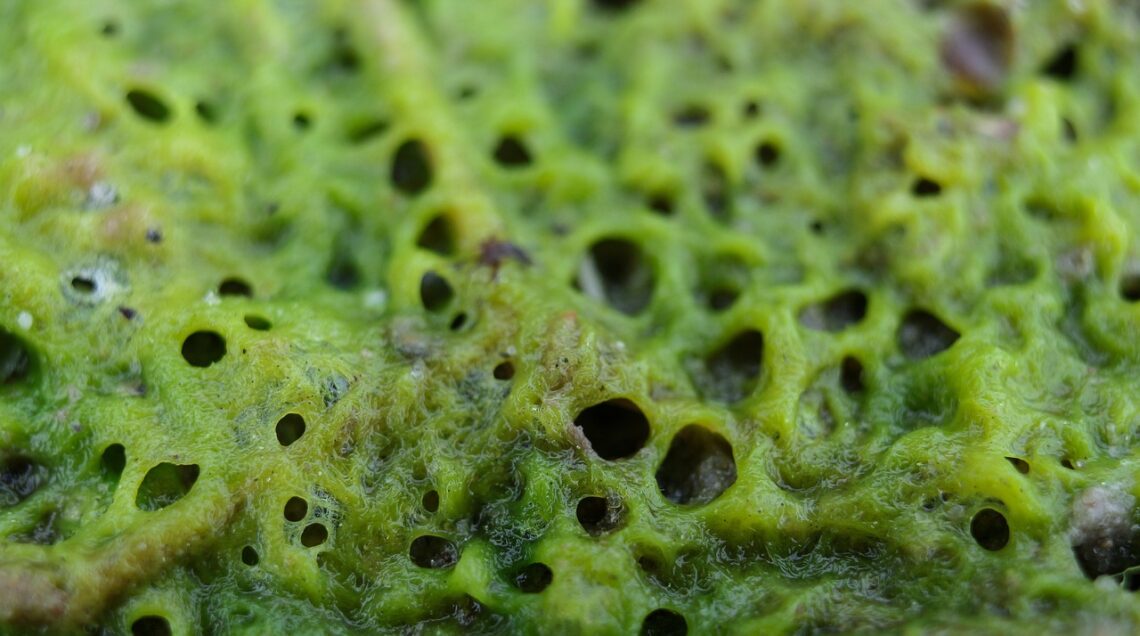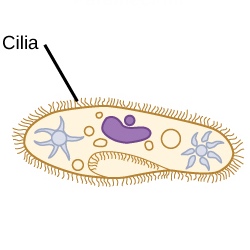
The Best Interesting Facts About Protists
Interesting Facts About Protists
Are protists organic materials or living organisms? The word protist comes from the Greek word meaning “first.” In the past, scientists believed they were simple, single-celled organisms, however, this has changed so let us learn more interesting facts about protists.
In the early 20th century, scientists began to classify them as separate groups of organisms. Today, they are classified as a kingdom of life called Protista.
The protists are also part of the superkingdom Eukaryota (also known as the “Higher Eukaryotes”).
So what exactly is a protist?
Protists are a diverse group of organisms that have several things in common. First, they are eukaryotic cells. That means they have membrane-bound organelles such as mitochondria, chloroplasts, and Golgi bodies.
Protists have a variety of shapes and sizes. Some look like tiny balls while others look like long strings. Some have long tails or flagella that they use to move around.
Protists are a type of eukaryote, which means they have a cell membrane-bound nucleus. Most protists are single-celled organisms, although some are multicellular.
Protists can be found in almost any habitat, including freshwater, marine environments, and soil. Many protists are decomposers, which means they help recycle dead plants and animals.
Some protists are also parasites, which means they live on or inside other organisms and can cause disease.
Though they are often overlooked, protists as living things play an important role in the ecosystem and are fascinating creatures in their own right.
Though protists are often thought of as simple organisms, they can be quite complex. A protist is any eukaryotic organism that is not an animal, plant, or fungus.
This means that protist cells are a very diverse group of organisms. Some protists are parasites, while others have a symbiotic relationship with other organisms.
Interesting facts about protists
Protists are mostly unicellular, but some are multicellular.
What is Unicellular
Most people think of unicellular organisms as simple life forms, but there is a lot more to these tiny creatures than meets the eye.
Here are some interesting facts about protists, the largest group of unicellular organisms:
Protists are incredibly diverse, with over 200,000 known species. Many protists are multicellular, but even those that are single-celled are complex creatures.
Protists come in all shapes and sizes. Some are microscopic, while others can grow to be quite large. The largest known protist is an alga called Caulerpa taxifolia, which can grow up to 6 feet long!
Protists play important roles in both freshwater and marine ecosystems. They are a major source of food particles for other organisms, and they help to recycle nutrients in the environment.
What is a multicellular protist?
Multicellular organisms are those that have more than one single cell. There are many different types of multicellular organisms, including plants, animals, and fungi.
These organisms are able to live and function because of the way their cells work together. Multicellular organisms are able to grow and develop because their cells divide and multiply.
This process allows the organism to get bigger and stronger. The cells in a multicellular organism also specialize in different tasks. This specialization helps the organism to function as a whole.
The cells in a multicellular organism are held together by a cell wall something called cell junctions. These junctions allow the cells to communicate with each other and work together.
Without these junctions, the organism would not be able to function properly.
What are Prokaryotic Cells
Prokaryotic cells are the simplest and most primitive type of cell. They lack a nucleus and other organelles and are usually much smaller than eukaryotic cells.
Prokaryotes are found in all environments on Earth, from hot springs to frozen tundra. Most prokaryotes are beneficial to humans, but some can cause disease.
Protista Protista is a eukaryotic organism that comprises several different types of unicellular and multicellular species.
They include protozoa, algae, fungi, and slime molds. Protistas have cell walls containing cellulose or chitin.
What are Parasitic Protist

Protist are single-celled eukaryote organisms that are often classified by their method of locomotion. Some protist move via cilia, while others have flagella.
A few groups of protists are stationary. Most protists live in water, but some groups live in damp soil or on the surface of other organisms.
Protists are generally considered to be plant-like because they photosynthesize, but some groups are parasitic and lack chloroplasts.
These parasitic protists cause diseases in humans, plants, and animals. Some examples of diseases caused by parasitic protists include malaria, amoebic dysentery, and Giardia infections.
Most protists are harmless to humans, but a few groups can cause serious illnesses. It is important to learn about these parasites and how to prevent them from causing disease.
What are Plasmodium Falciparum
Plasmodium falciparum is a protist that causes malaria. It is transmitted by the Anopheles mosquito and infects humans.
The disease it causes, malaria, is a major health problem in tropical and subtropical regions.
P. falciparum is one of four species of Plasmodium that infect humans. The other three are P. vivax, P. ovale, and P. malariae.
All four species can cause severe illness, but P. falciparum is the most dangerous. Malaria caused by P. falciparum can be fatal if not treated quickly.
The symptoms of malaria include fever, chills, headache, nausea, and vomiting. Severe cases can lead to brain damage, organ failure, and death.
The Sexual Reproduction of a Protist
The sexual reproduction of a protist is not as simple as the process of mitosis. In fact, there are four different ways that protists can reproduce sexually.
Some protist species will use two different methods, depending on the environmental conditions. One common method of sexual reproduction among protists is called conjugation.
This is when two individual cells will join together and exchange genetic information through a bridge that forms between them.
The bridge is made up of tubules that connect the two cells and allow them to share cytoplasm, which contains their DNA.
Another method is called autogamy, which literally means self-fertilization. This happens when a cell divides into two genetically identical cells with half of the original cell’s DNA.
Who Was Ernst Haeckel
Ernst Haeckel was a German biologist who was born in 1834. He is best known for his work on the classification of animals and plants, and his theory of evolution.
Haeckel was also an accomplished artist, and his drawings of microscopic organisms were used to support his scientific work. In 1866, Haeckel published a book titled Natürliche Schöpfungsgeschichte.
This was the first of many books on evolution written by Haeckel. It was an important contribution to the theory of evolution.
In Nat rliche Sch pfungsgeschichte, Haeckel described his ideas on the origin of life. He thought that there were three basic stages in the development of life.
The first stage involved the development of microbes and bacteria. The second stage involved the development of algae, fungi, plants, and animals.
The third stage involved humans. Haeckel believed that these three stages represented a progressive evolution of life on Earth.
What is the life cycle of a Protist
The life cycle of a protist depends on the type of protist. Some protists reproduce asexually, while others reproduce sexually.
Most protists are unicellular, meaning they consist of only one cell. The cell contains all the necessary parts for the protist to function and reproduce.
The life cycle of a unicellular protist typically consists of three stages: Growth, reproduction, and death.
During the growth stage, the protist consumes food and grows in size. Once the protist reaches a certain extent, it enters the reproduction stage.
During this stage, the protist produces offspring by dividing into two cells (binary fission).
Protists are a type of eukaryotic organism that can be found in nearly every ecosystem on Earth. Though they are often overlooked, protists play an important role in the life cycle of many plants and animals.
Here are some interesting fun facts about protists:
Most protists are single-celled organisms, though some, like red algae, green algae, and other water molds, may be multicellular.
Protists come in a variety of shapes and sizes. Some, like amoebas, have no fixed shape and can change their form as needed. Others, like diatoms, have hard shells made of silicon dioxide.
Protists can be classified into three main groups: animal-like protists, plant-like protists, and fungus-like protists. Animal-like protozoans are typically mobile and prey on other organisms for food.
Protists can be found in almost any environment on Earth, including fresh water, salt water, and soil.
Protists are a large and varied group of single-celled eukaryotic organisms. They include algae, slime molds, and protozoa.
Some protists are microscopic, while others are quite large. Protists can be found in nearly every type of habitat on Earth. They play an important role in the food web.
Many protists are photosynthetic and produce their own food. Others are heterotrophic and feed on other organisms.
Enjoying this article? Now read Interesting Facts About Cardinals
Fun and interesting facts about protists
Protists can be both predators and prey.
Protists are very diverse in their morphology, physiology, and behavior. Some protist species are capable of moving on their own, while others are stationary.
Some protist species reproduce asexually, while others reproduce sexually.
There are many different types of protists. Some are photosynthetic, while others are heterotrophic.
Photosynthetic protists produce their own food, while heterotrophic protists rely on other organisms for food. Protists can be classified based on their means of locomotion.
Some move by cilia, flagella, or pseudopodia, think of them as something like false feet. Protists play an important role in the environment.
Some protists help to decompose dead organic matter. Others provide food for other organisms.





One Comment
Pingback: